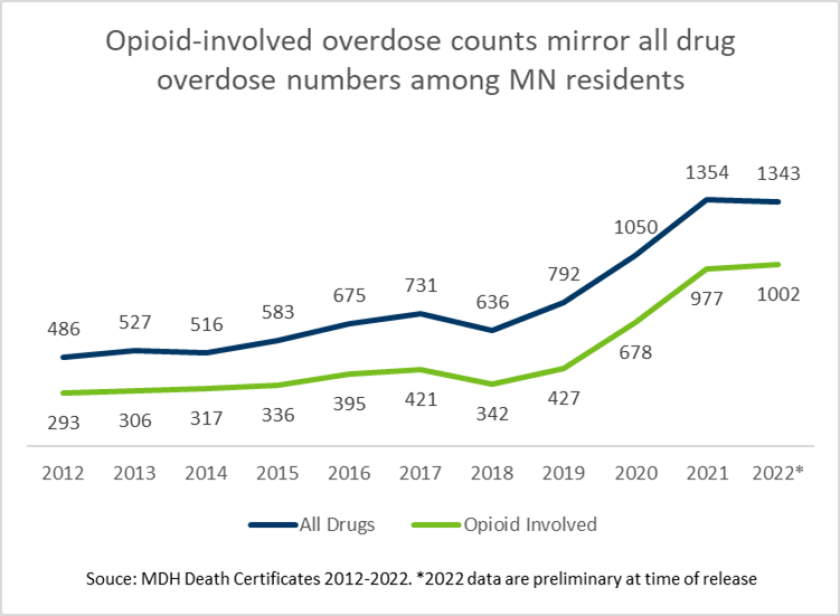ROCHESTER ŌĆö In 2022, drug overdose deaths remained at historic high levels but held steady compared to 2021, per the Minnesota Department of Health's Statewide Trends in Drug Overdose: Preliminary 2022 Data Update.
The report, found a slight decrease in overdose deaths from 2021 (1,354) to 2022 (1,343), based on preliminary death certificate data. This decrease in deaths is more noticeable in Greater Minnesota, with a 5% reduction in fatal overdoses from 2021 to 2022.
ADVERTISEMENT
Opioid-involved overdose deaths increased by 3%, and MDH says that fentanyl was involved in 62% of fatal overdoses in 2022. The potent, synthetic opioid contributed to 92% of the 1,002 opioid-involved overdose deaths in Minnesota. However, fatal overdoses from heroin, methadone and prescribed opioids decreased, with deaths from heroin reaching a 10-year low.
ŌĆ£We are responding to the more deadly threat of fentanyl with several new tools for saving lives that were passed by the Legislature in 2023, such as expanding the availability of naloxone, and covering the costs of having it on hand, in school buildings, treatment programs, and during emergency and law enforcement calls,ŌĆØ Minnesota Commissioner of Health Dr. Brooke Cunningham said.
Nonfatal overdoses treated in Minnesota's hospitals also decreased year-over-year from 17,792 to 16,934.
"In 2022, for every one overdose death, there were nearly 13 nonfatal overdoses," the report reads. "A majority of nonfatal overdoses were treated in the emergency department (69%) and were of unintentional (i.e., accidental) or undetermined intent (65%)."
While the MDH report doesn't break the 2022 data down by county, the Minnesota Bureau of Criminal Apprehension's shows 45 drug-related deaths in Olmsted County last year.
The data update comes just a few months after Gov. Tim Walz and the Minnesota Legislature passed $200 million in funding to address substance use prevention, harm reduction and recovery. Also this year, naloxone, an opioid overdose reversal medication known by the brand name Narcan, was approved for over-the-counter purchase. Certain facilities and professionals, including schools and law enforcement officers, are required to carry naloxone.










